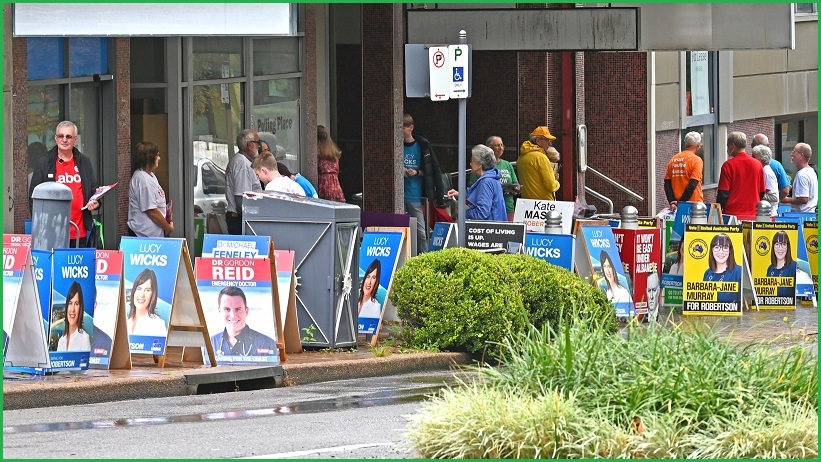As Australian voters take to the polls this week, more than 4.8 million non-English speakers will walk past signs written in English, how-to-vote cards written in English, and staff speaking English, to cast their ballots for primarily English-speaking candidates.
For the native English speakers that aren’t part of Australia’s culturally and linguistically diverse (CALD) community, it may be hard to appreciate how disenfranchising this can be – and how important it is that the Australian Electoral Commission (AEC) has gone to the effort of translating postal-voting information into 20 languages as well as translated information and interpreter services in 36 languages.
Producing the translations, however, requires a lot more than just feeding text into Google Translate, Facebook’s M2M-100, Amazon Translate, or the other AI-powered translation services now available online.
Despite digitally transforming many parts of their operations, many organisations providing customer service to foreign speakers are still opting for a human-based approach.
Translation services firm LEXIGO, for one, has just over two dozen local staff in its Melbourne and Singapore offices, but maintains a network of more than 10,000 vetted translators to convert documents to, from, and between 171 different languages.
The accuracy and skills of each translator are continuously rated using a proprietary algorithm called Smart Rank, which uses the scores to allocate staff as new jobs are received.
LEXIGO has introduced machine translation to the process as a supporting technology – even Google Translate “is not bad”, founder and CEO Mark Saba told Information Age – and the company uses numerous engines because “some of them are stronger in certain language pairs than others.”
Machine translation hasn’t replaced humans quite yet, however: more than a decade in operation has taught Saba not to overstate technology’s role when working with clients.
“We would always explain that it’s not about machine translation, but human translation backed by machines,” he explained.
“I’m glad a lot more people understand that it has evolved into a pretty seamless platform, with AI integrated as well – and that they understand the difference between an enterprise-level neural machine translation and Google Translate.”
Neural machine translation technology “is learning clients’ specific language and brand tone of voice,” he added, “and helping our translators to translate faster and more accurately by remembering results from the past for particular clients” or nuanced terms used in the seven industries on which LEXIGO focuses.
The machine-learning platform’s ability to learn from the past, and to maintain consistent tone over long periods of time, has proved crucial for government organisations like the AEC and Service Australia, a LEXIGO client with whom the firm has worked for over a decade to translate posters, fact sheets, newsletters, emails, and even audio voiceovers that convey critical information about social services and benefits.
Other clients – including Westfield, Centrelink, ANZ Bank, Emirati telecommunications provider Etisalat, the City of Gold Coast, and even Bega Cheese – value the hybrid approach to ensure consistent communications to their multi-lingual customer bases as they expand overseas or cater to incoming travellers.
Finding the right balance
LEXIGO does lean heavily on digital technologies to streamline its project management, Saba said, noting that “there’s a lot more to the technology around this than just the machine translation.”
“Because we’ve automated so much of the project management process for large and complex projects,” he explained, “we can basically start right away: where a traditional agency might take two or three days to set up a 50-plus language project, we’ll do it within 30 minutes.”
LEXIGO is just one of a large array of language service providers (LSPs) that have seen business exploding during the pandemic, driven by increasing digitalisation of government and private-sector services and collaboration with colleagues and suppliers around the world.
The LSP market is expected to grow at over 7.9 per cent annually through 2024, when it will be worth $103 billion ($US76.99b) annually as providers expand their markets and diversify their offerings.
That’s a lot of translating – and for all its reliance on human beings, LEXIGO is also working to bolster its market offering by building a hybrid self-managed service, due for launch later this year, that will provide machine-translation technology so customers can run quick and rough “transactional” translations on a self-service basis.
This approach means customers can decide for themselves what level of assurance they require: if they just want to get the meaning of a document, for example, machine translation may suffice – but humans may be necessary if they need a word-perfect translation of a legal contract or healthcare instructions that, studies have shown, cannot be translated accurately enough by machines.
“Five to ten years ago, translation services were very much human vs machine,” said Saba. “Now, the conversation has evolved towards mastering a hybrid approach that leverages the speed and processing power of AI and automation, coupled with the nuances of communication that only native speakers would understand.”
“There’s a lot of cost savings in the customer service environment, because a lot of the time they don’t have to push it over to the human service – but they can decide to do so if they need it. When it is public facing, you step it up a little.”










